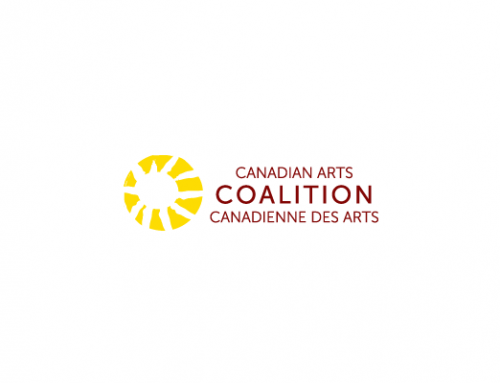FINAL WORD
by Sara McKarney: Advocacy Director
As I start to write this, I am on my flight back from Montreal. A long weekend style trip of 2.5 days was not nearly enough to experience the city, but taking the trip to go to the CARFAC National Conference was completely worth it. This was my second conference, last year hopping on and Visual Arts Alberta – CARFAC convoy to Saskatoon for the conference themed on Contracts and Negotiations. This year was particularly exciting for us, as National picked up the Alberta-born theme of Draw More Income, which was the brain-child our board president, Sydney Lancaster, and Executive Director, Chris Carson.
In Alberta, we reached out to a range of artists across the province, and similarly National did that but across the country. The main panel consisted of Moridja Kitenge, a mixed media painter and RAAV president in Montreal, Teresie Tungilik, an indigenous artist from Nunavut who acts as the Advisor for the Arts & Traditional Economy for the Government of Nunavut, Melissa Mongiat, the co-founder of a studio that works in interactive commissions for public spaces, and Collin Zipp, a new-media artist from Winnipeg who balance many arts jobs such as being the Director for PLATFORM centre for photographic and digital arts. The panel was interesting, with each artist talking about how they accessed different markets, or made income around their practice. Kitenge talked about altering his work to fit his audience as simply as changing the scale of it, as different markets demanded different things. The need to assert your worth and knowing what that price you work needs to be in order to make a profit was emphasized by Tungilik. Mongiat shared the process of the studio’s public art project of singing swings and the need to understand what the product they were selling truly was; the object itself, an experience or the increased foot-traffic the work brought. Zipp talked about how some of the different ways he makes work around his practice since his work has a very niche market, which was a tactic I am all too familiar with.
The most valuable part of the conference in my opinion was the presentation on Artists’ Resale Right (ARR). I understood the basis what CARFAC was advocating for, but being updated with where we are at with making it real and the array of benefits it would bring was immensely helpful. I was able to combine my notes with those of Sydney Lancaster, and now I want to share them with the membership. These notes act as talking point about ARR. Having our membership knowledgeable and confident in advocating for this important part of to making it become real. Please read through the notes, understand what ARR would do, and book some face time with your MP to talk about it. The staff and board of Visual Arts Alberta – CARFAC are always more than happy to talk more about this and make sure you have the information to speak confidently on the matter. The more the government hears about our concerns, the more likely we are to see progress.
Artist Resale Right
We already have majority support from all the parties in the House of Commons for this bill – we just need to get it on the agenda to actually get it both tabled and passed
How National suggests we talk about ARR:
• As a Royalty – a royalty is something you have a right to receive. If it is described as a fee or charge, it sounds like it is optional.
• What would it be – for work resold on the secondary market (auctions, resale from commercial galleries). We are aiming for 5% (not fixed number) of resale price to the creator of the work. ARR requires a small amendment the copyright act, attaching ARR to the artist’s copyright/moral right to the work rather than their economic rights. The artist has an indestructible relationship with the work even after the work is sold.
• This is a labour issue: ARR recognizes the increase in value of an artwork over time is due to the artist’s practice: the work an artist does during their career is a factor in the increase of value for that artist’s work. Artists are some of the poorest labourers in Canada and are part of the most economically vulnerable population. ARR would be acknowledging the value of their work, and help counteract the poverty level in the arts, as well assisting in providing some retirement income for these workers. The economic reality for many artists is that they do not have adequate income to properly fund their retirement. ARR would provide income for in their senior years and cost the government NOTHING, since the royalty would be gathered directly from people who are profiting from the resale of artwork, not from the Federal Government, who is already dealing with the problem of providing adequately for an aging population.
• ARR is an International Trade issue: the ARR exists already in 93 countries; without ARR in Canada, Canadian artists do not have reciprocal rights to derive income from the resale their work in other countries.
• This is also an important Indigenous issue – many developing countries have an artist resale right in place as a way to protect their indigenous populations from exploitation. ARR helps indigenous artists receive much-needed income from the situation in which international dealers buy indigenous work, and then resell it at inflated prices. The resale right allows for those vulnerable populations to have access to a portion of those profits, and serves to raise awareness within those populations regarding their rights as artists (like copyright).
• EASY to implement – ARR can be managed by infrastructure already in place with CARFAC and CARCC (artists and dealers would register with us, and both would go through CARFAC / CARCC to get the money to the artist. AS NON-PROFIT organizations, administration fees are kept to the absolute minimum (just like the current system in place with copyright payments).
Getting the issue tabled in parliament is EASY – there is general support across all parties for the ARR – but the challenge is to get a vote on an ARR bill. (Each sitting of the House can only pass so many bills, and the 2016 bills to be voted on have already been announced. ARR is not on the list. The goal is to have an ARR bill on the list for 2017. This is especially key since passing this bill COSTS the government NOTHING – all of the funds under discussion are within the context of the resale market, and not coming out of Government revenue. Face to face visits with your MP are one of the most effective ways to communicate the urgency of getting an ARR on the House agenda for voting.



